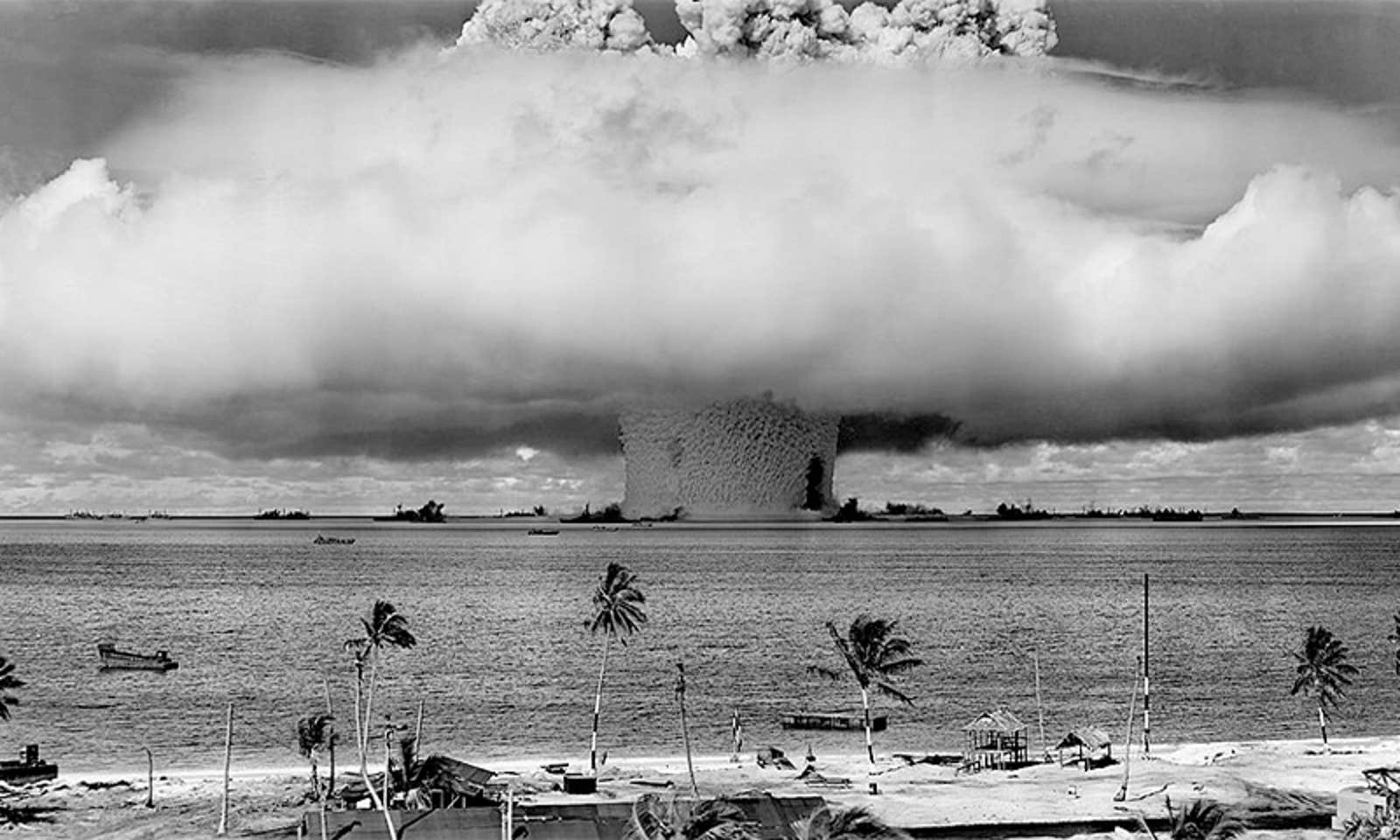Our planet may be headed back to a very dark place.
In a face-to-face meeting today (October 30th) in South Korea, United States President Donald Trump and Chinese President Xi Jinping spent 90 minutes discussing the war in Ukraine, trade relations between the two countries, and other issues. Reports indicate that some progress was made in staving off a nascent trade war between the U.S. and China, but it was what Trump wrote on social media just minutes before that meeting that is sending shockwaves through the world.
“Because of other countries [sic] testing programs, I have instructed the Department of War to start testing our Nuclear Weapons on an equal basis,” he posted to his Truth Social platform.
Trump added that the testing will begin immediately. His comments came after Russia announced tests of a nuclear-capable sea drone and missile this week.
If the U.S. does resume trial detonations of live nuclear weapons, it would be the first such testing in the country since 1992. The Nuclear Test Ban Treaty of 1963 forced nations to conduct nuclear testing underground, and hundreds of detonations occurred in subterranean testing facilities for some 30 years. And in 1996, President Bill Clinton signed the Comprehensive Nuclear Test Ban Treaty, which prohibited nuclear explosions anywhere on Earth. The U.S. government complied with the ban, as did those of Russia, China, and most other nuclear-capable nations. India and Pakistan continued testing into the late 1990s and North Korea conducted its most recent nuclear weapons test in 2017.
Read more: “What Nuclear War Means for the Ocean”
Prior to this pause in nuclear testing, Earth’s nuclear powers conducted thousands of test detonations, with the U.S. leading the way during the Cold War. According to the U.S. Department of Energy, the country performed 1,054 nuclear tests between 1945 and 1992, including more than 200 underwater and atmospheric tests. Weapons were detonated mainly at the DOE’s Nevada Test Site just outside of Las Vegas. But the U.S. government also exploded nuclear bombs in the Marshall Islands and off Kiritimati Island, both in the Pacific, and three in the Atlantic Ocean. A handful of tests occurred at other U.S. sites, including in Alaska, Colorado, Mississippi, New Mexico, and in Nevada at locations outside the Nevada Test Site.
This testing, combined with hundreds of other detonations by the Soviet Union during the Cold War, have caused untold environmental damage, and have left permanent marks inside the cells of living things—including humans.
The most immediate environmental effect of nuclear testing is the spread of radioactive chemicals throughout the air, soil, and water. In Nevada, several radioactive contaminants remain from the hundreds of tests conducted there, including many explosions that occurred after the Nuclear Test Ban Treaty drove such experiments underground. In the worst affected areas, the water table was so befouled by radioactive compounds that water cannot be consumed from it for thousands of years.
In Kazakhstan, the Soviet Union detonated hundreds of nuclear bombs—mostly underground at the Semipalatinsk Test Site—from the 1960s to the 1980s. This testing accelerated the desertification of the area, which continues today, and radioactive contamination of the environment has essentially rendered it a wasteland by stifling economic development there.
But perhaps no environmental damage was worse than that visited upon test sites in the Pacific Ocean during the Cold War. The Bikini Atoll, a coral reef in the South Pacific, northeast of Australia, was rendered uninhabitable by test detonations in the 1950s. A 1998 report from the International Atomic Energy Agency recommended that the area not be permanently resettled due to the radiological impact on the environment. And in Muroroa, another Pacific atoll above which the U.S. conducted nuclear testing, researchers detected fission products in ocean food webs and documented natural disasters, including landslides and earthquakes, that resulted from the detonations.
In humans and other long-lived organisms, a signature of all that Cold War testing, especially at its height in the 1950s, exists in what scientists call the “bomb pulse.” In addition to the immediate harm of radioactive compounds, such as a spike in thyroid cancer incidence near testing sites, all that testing caused a fundamental shift in the chemicals circulating in Earth’s atmosphere, even far removed from test sites. This has caused a unique profile of radioisotopes of carbon—especially carbon-14—in all biological materials formed since that era of frequent testing. Because C-14 decays at a predictable rate, researchers have used the proportion of that isotope to garden variety carbon for a variety of applications, from forensic analysis to dating wines and tracking poached elephant ivory to determining the age of 400-year-old Greenland sharks.
Aside from this one scientific utility, on the whole, nuclear testing has been disastrous to environmental and human health.
If the world continues on the path toward resuming nuclear testing, there are myriad echoes from our past experimentation in this realm to remind us of the inherent dangers. The question is, will we listen to these warnings? ![]()
Enjoying Nautilus? Subscribe to our free newsletter.
Lead image: United States Department of Defense / Wikimedia Commons
































